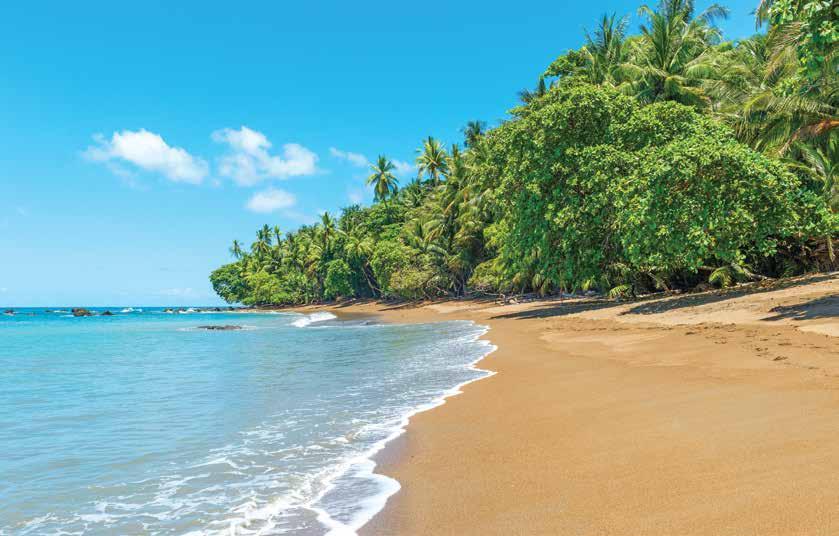
3 minute read
Otherworldly Sea of Cortez
By Keph Senett
With some of the most remote and biodiverse places on Earth, the Sea of Cortez is also known as the Galapagos of North America.
Advertisement
After hours spent travelling through the night, I open the cabin door and walk out onto the ship’s deck. We’ve dropped anchor, it appears, on Mars. We’re in the middle of the sea, morning-placid except for the trailing ripples left by a low-flying pelican. The rising sun projects a lightshow onto rocky ridges rising from the water and there is not another single living thing in sight.

SAFARI ENDEAVOR IN AGUA VERDE
© UNCRUISE ADVENTURES
I’ve never been drawn to desert landscapes. I imagined it a desolate, thirsty place of relentless heat and not much else, but when I learned about the Sea of Cortez – a gulf between the peninsula of Baja California and the Sonoran Desert in mainland Mexico – I was curious. What might it be like at the confluence of these opposite environments?
Morning coffee in hand, I climb to the top deck of our ship, UnCruise Adventures’ Safari Endeavor. I gaze out at the volcanic rock, which turns pink and puce and purple in the shifting light. By happy geographic accident, this gulf and the islands it contains are some of the most remote and biodiverse places on Earth, resulting in its nickname: The Galapagos of North America. Everything from the terrain to the marine life to the local flora and fauna is strange and wild, and being among them feels, well, like being on a different planet.

MULE RIDE IN AGUA VERDE
© UNCRUISE ADVENTURES
My first taste of the fantastic comes on a shore excursion when during a couple of hours spent beachcombing, I discover an array of astonishing creatures – or rather, their remains. Here, the sea has returned to the shore a spiny pufferfish, the pointy skull of a dolphin, and the inverted sheath of a snake’s shed skin. There are also nearly 900 species of fish in the region, and around 90 species are endemic, living here and nowhere else. It’s the same with the animals and plants. Baja is a place of living things that could not live anywhere else.
In the days that follow, I snorkel, kayak, and horseback ride – activities that bring me face-toface with some of the region’s stunners. I swim with a school of parrotfish, then dive to get a closer look at the reef. And because we’re visiting in January, I search out grey whales that have migrated south with their young. Luckily, the captain of our fibreglass panga knows the water and the whales well; it doesn’t take long before we’ve found a pod, mothers, and babies together.

WATER ACTIVITIES WITH SAFARI ENDEAVOR
© UNCRUISE ADVENTURES
The following morning, we take a skiff to the rocks at Isla Monserrate where fat bulls sun themselves and bark in our direction. I enter the water and can’t help but laugh into my snorkel as an adolescent sea lion torpedoes between my legs, bites at my flipper, then circles back to blow bubbles in my face.

SEA LION PLAYING WITH FINS
© UNCRUISE ADVENTURES
On the final day, I disembark on Isla San Francisco and head into lowlands surrounded by a horseshoe of rocky cliffs to walk the salt flats. The plant life is weathered from wind, a patchy carpet of scrub punctuated by overgrown cacti. Despite its plain appearance, the salt flats are teeming with endemic plants – in this case, salt-tolerant succulents like the iodine bush and pickleweed.
That night, I return to the top deck, this time to take in the spectacle of billions of stars, visible in the inky sky. On the way, I meet a group of fellow cruisers peering over the rail at a patch of bioluminescence blooming in the water. I stay and watch, marvelling at this darkened place lit magically both from above and below.

GREY WHALE NEXT TO A BOAT TOUR
© UNCRUISE ADVENTURES






